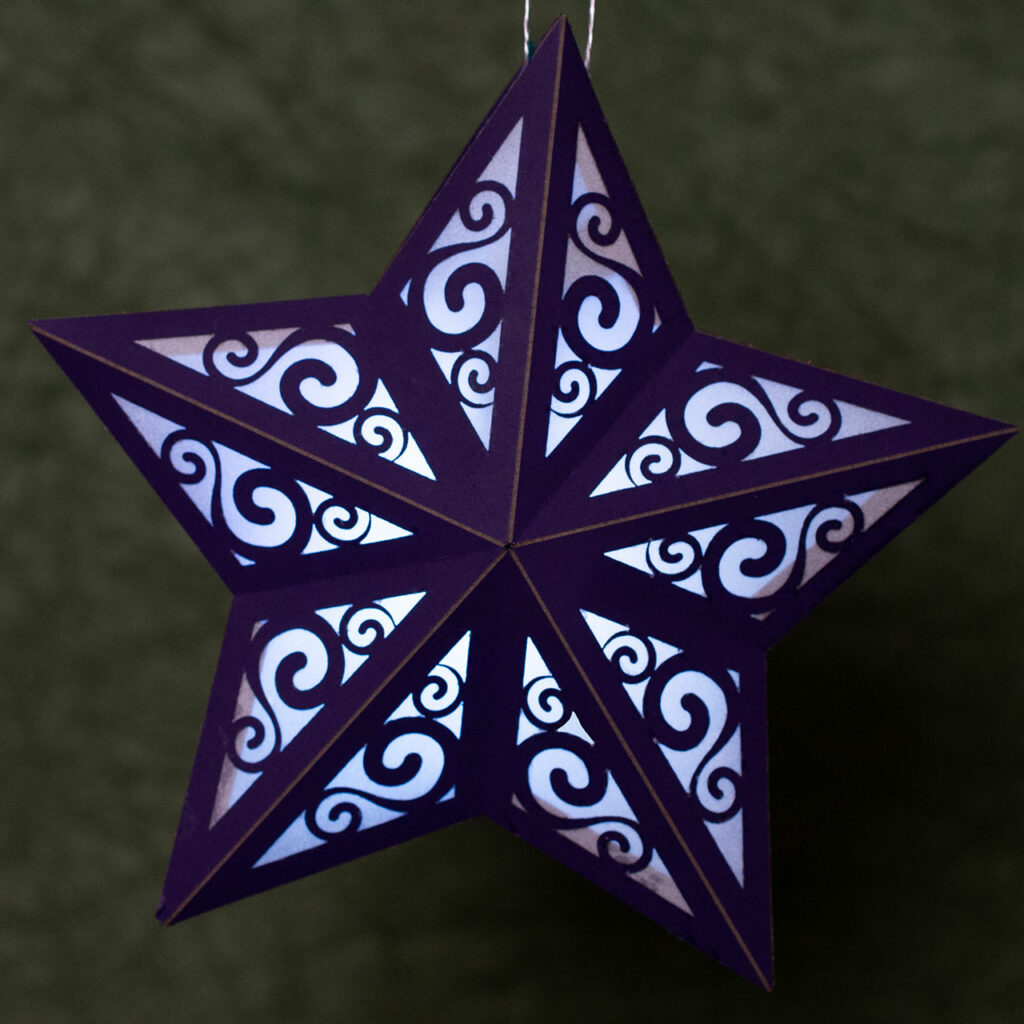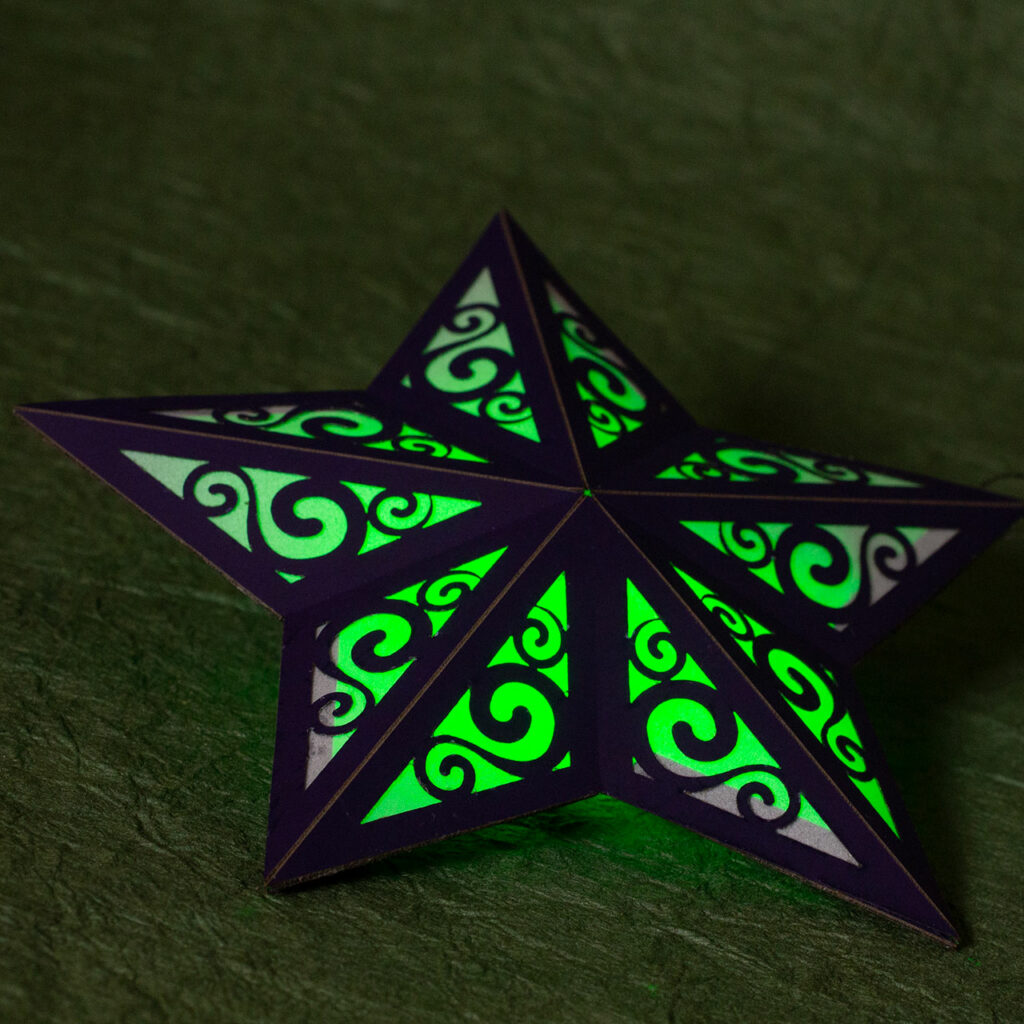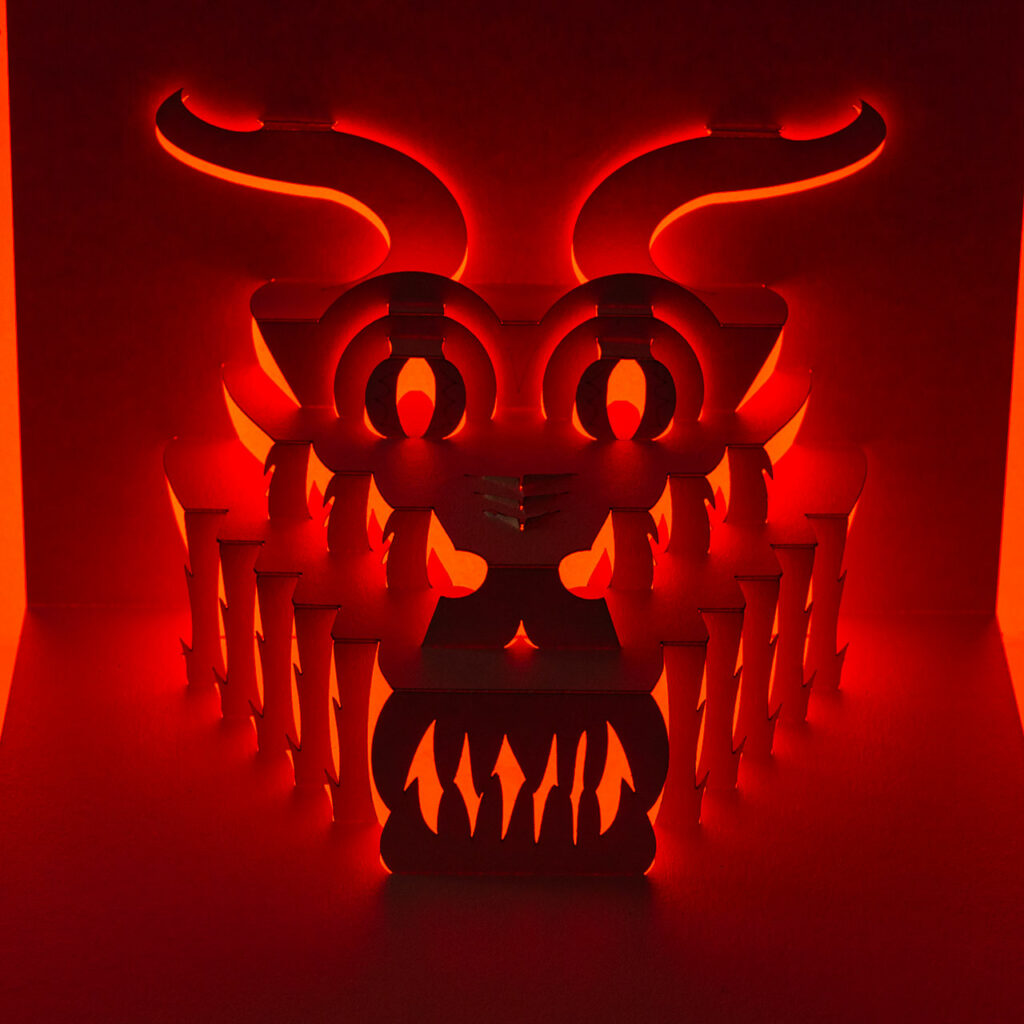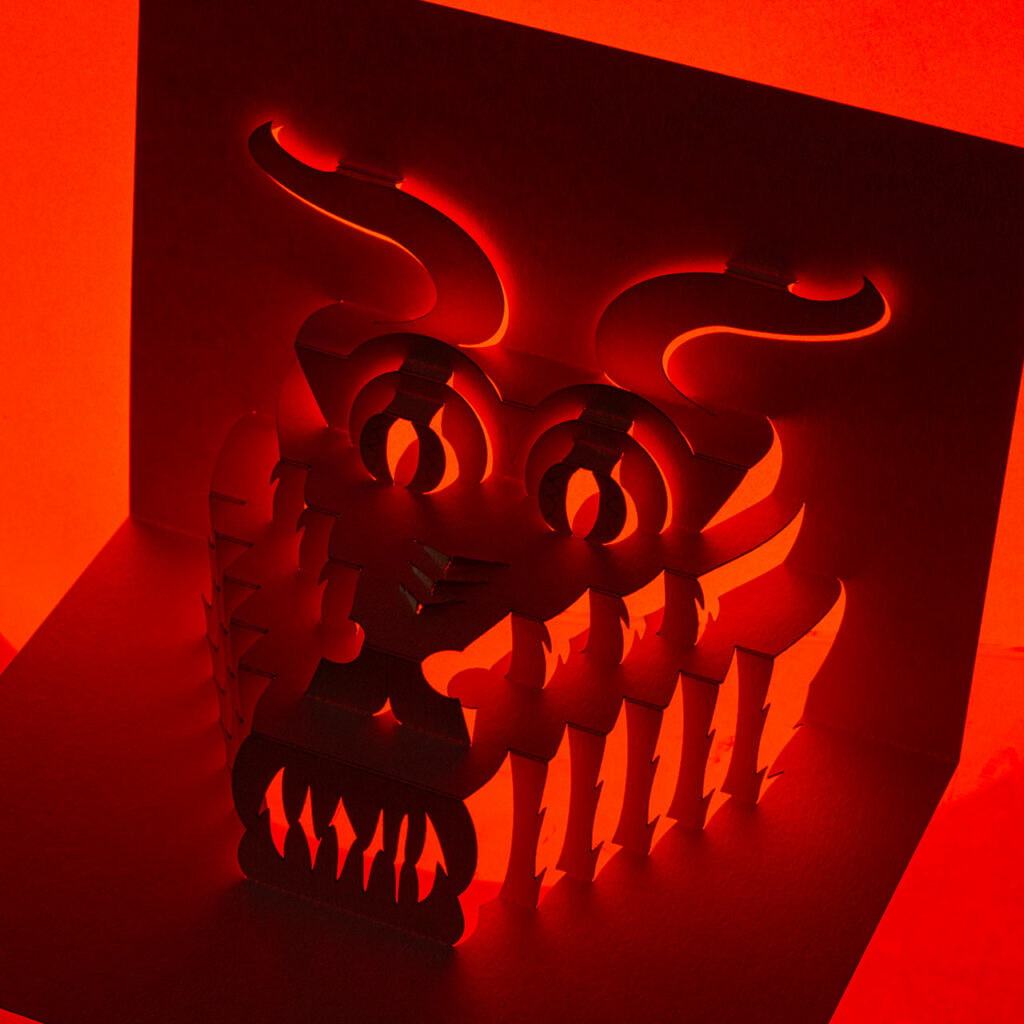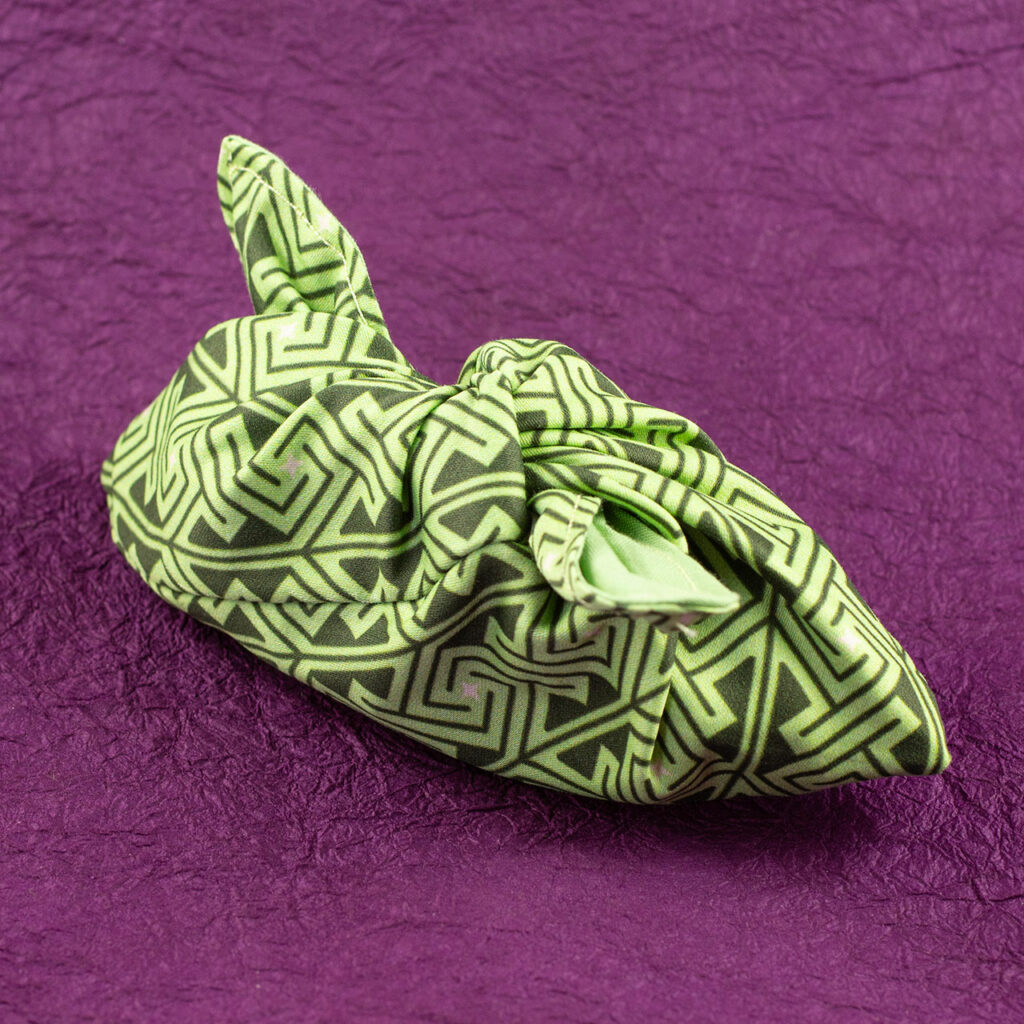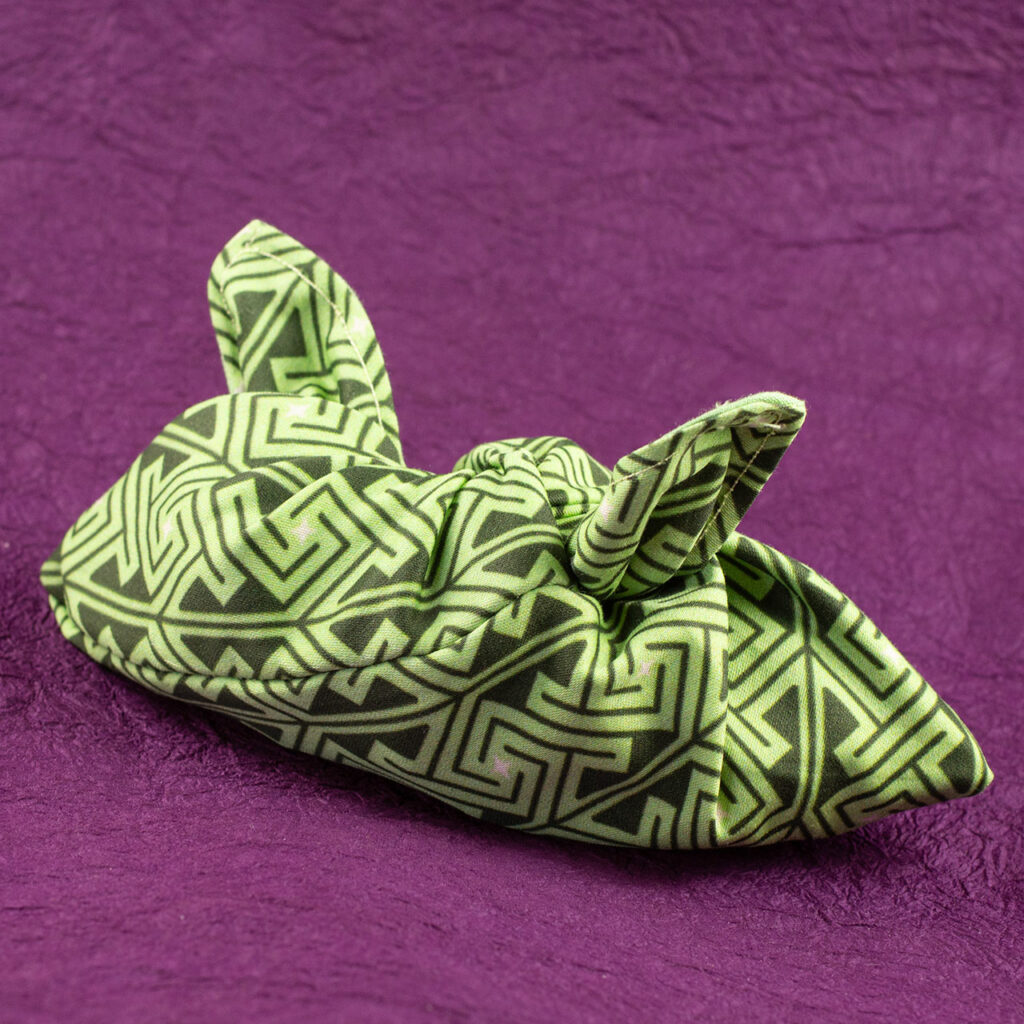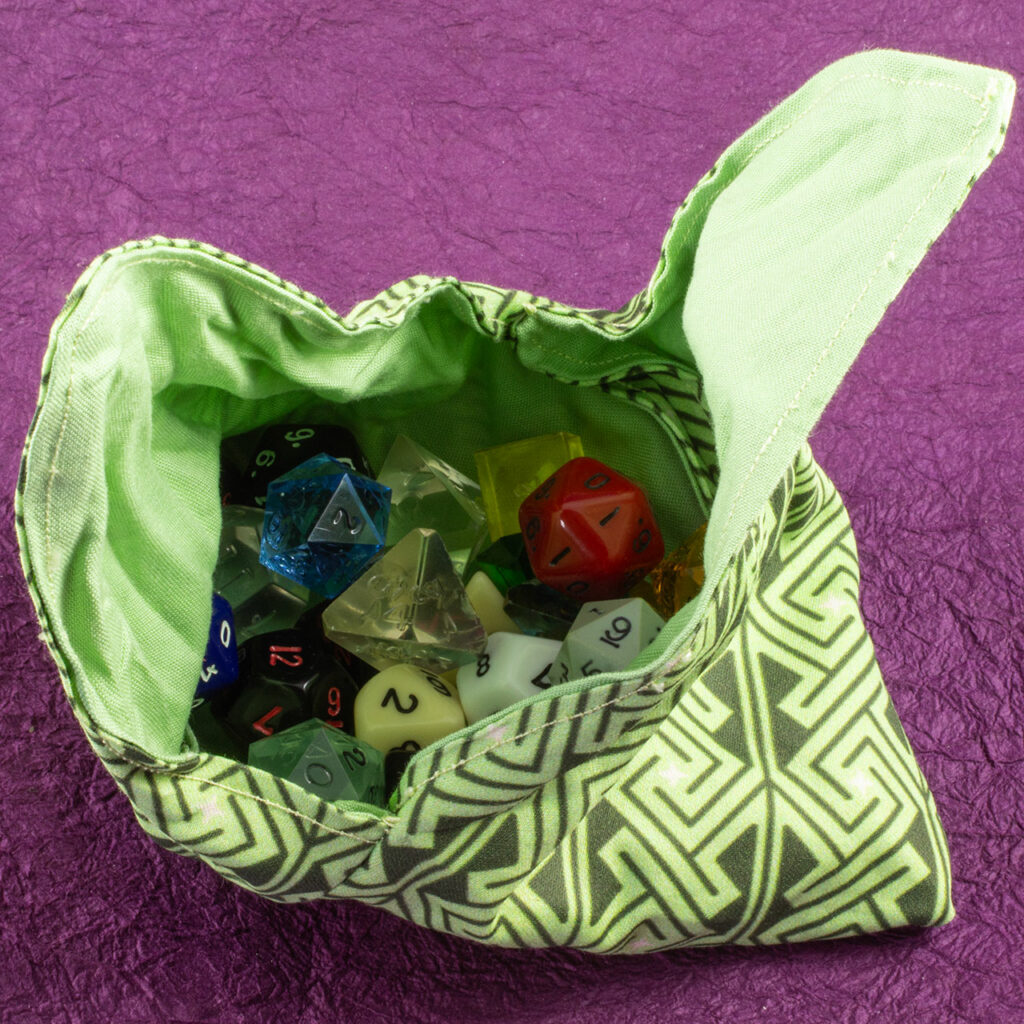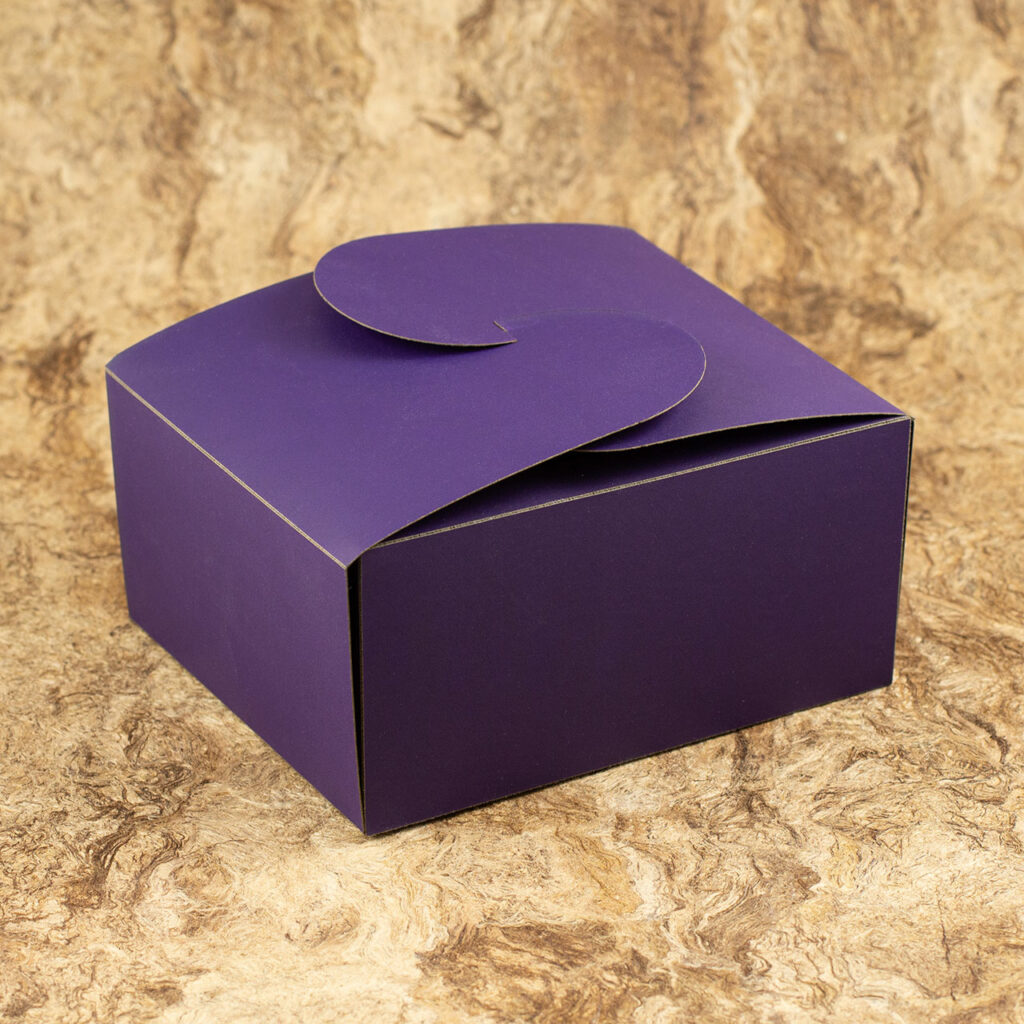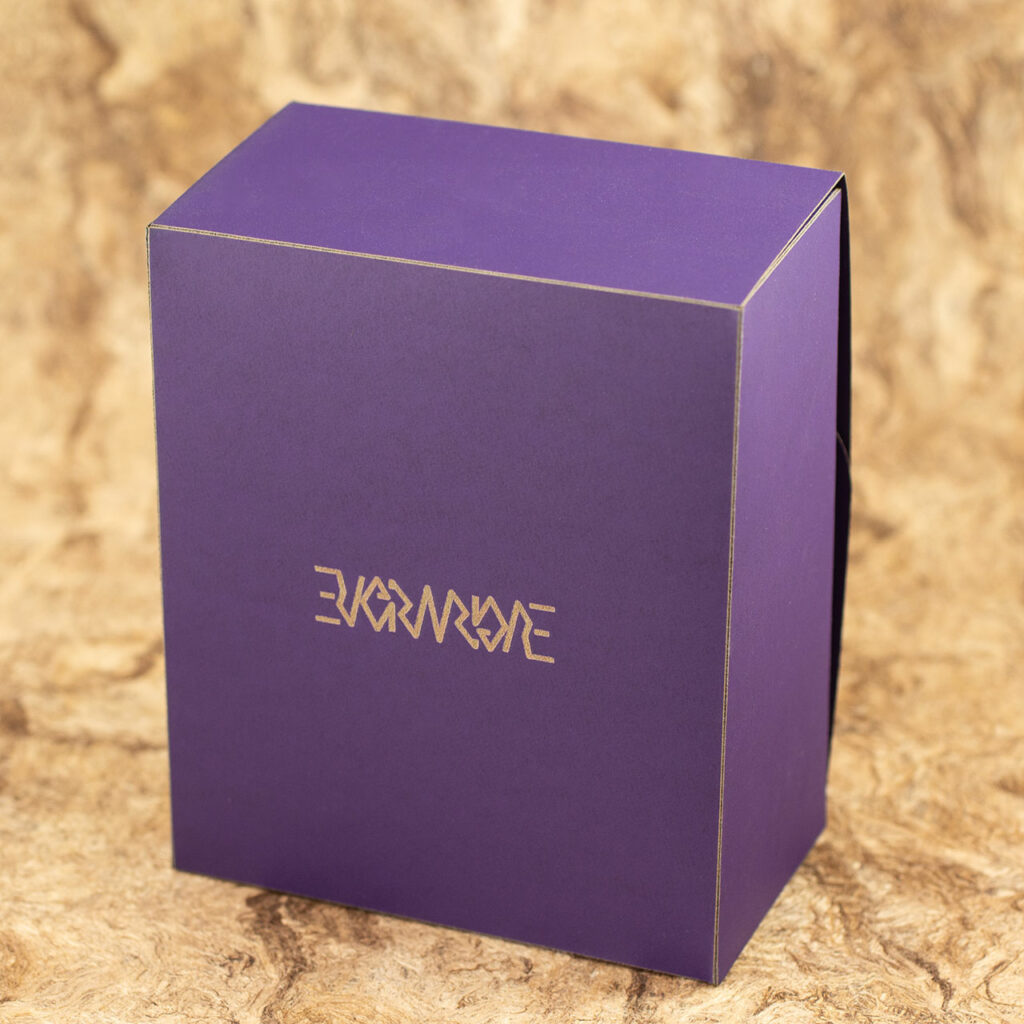Light-Up Paper Star
I started playing with making a light-up paper star to use as a package or tree ornament over the holidays a few years ago. The previous attempt used separate pieces for each point of the star. While that has a great form, it was difficult to assemble and fragile at that size. This past season, I came up with a simpler design that just has a front and a back. It’s obvious enough that I am sure it has been done before but, it worked out pretty well for this.
This is cut from a heavy violet cover stock with translucent panels glued to the inner sides. A little arm holds a Chibitronics Rainbow Fade Circuit Sticker in the middle. Conductive thread runs out through a point to a 3D-printed CR2032 battery holder I designed.
There is a video showing how I made it and, the patterns and STL files are below. The patterns show the areas where I cut out scrollwork so you can add your own designs. Even just a pattern of holes in those areas without the translucent vellum would make a great star.
These files are for personal, non-commercial use only. Note that, by referencing these, you are agreeing to release any variations you create under identical terms.
Other Resources
Dragon Pop Up Card
I have really been wanting to do a dragon pop up for awhile. Though it might not be most people’s first holiday association, I had time to work on a card and, this was the one that called to me. Conveniently, this coming Lunar year is the Year of the Wood Dragon. Paper is basically wood, right?
Azuma Bukuro Dice Bag
I thought a simple dice bag styled after a Japanese azuma bukuro bento/market bag would be fun. The fabric is 100% cotton sateen, custom-printed with one of my Celtic key pattern designs. I cut the fabric on the laser using the new vacuum tray, which was great for the precision.
Violet Box
Jack-O-Lantern 2023
Jack-o-lantern 3D modeled in Nomad Sculpt with panning and flickering candle animations done in Blender.
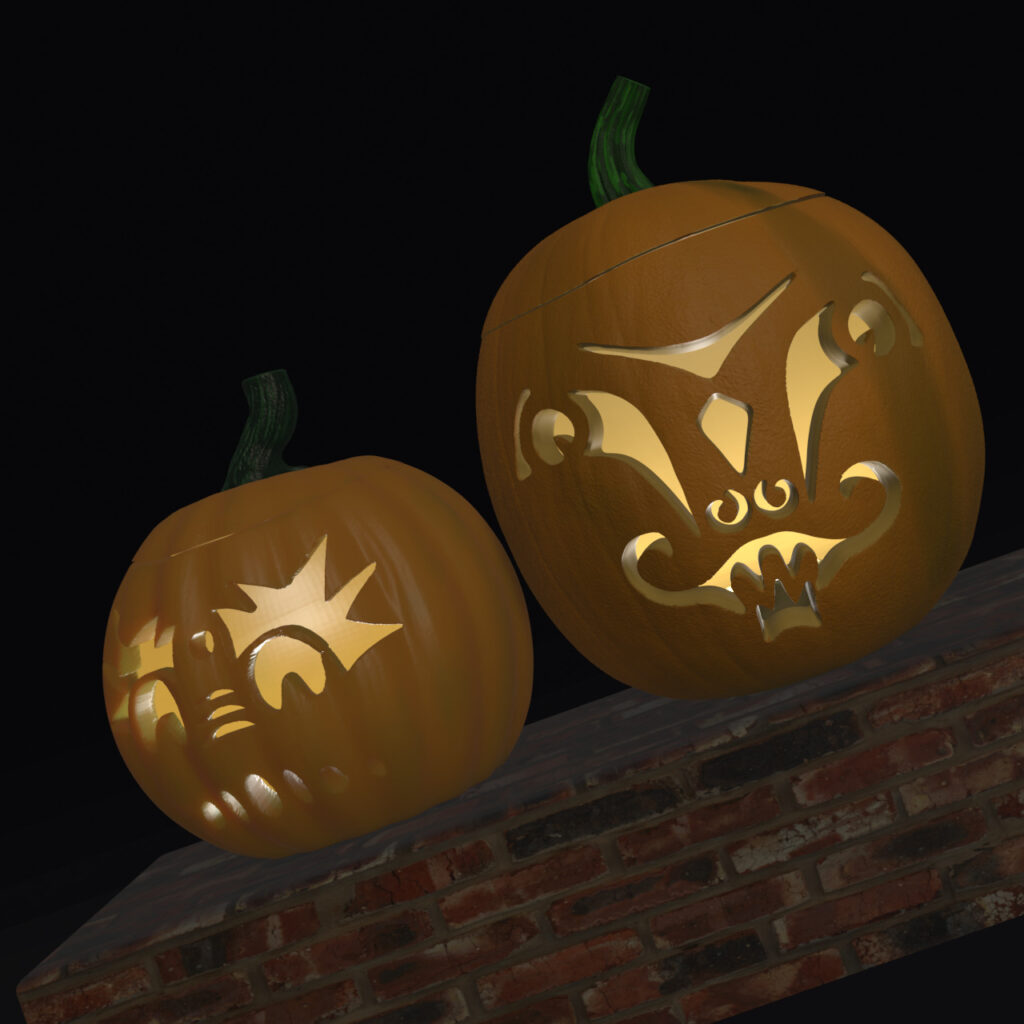
Laser Dye Removal Skull Shirt
Some time ago, I took a photo of a skull set into a wall in the catacombs under Paris. In this underground ossuary are interred many forgotten French soldiers and plague victims, their identities lost to time.
With some adjustments, I was able to get it suitable for laser engraving.
I wanted to try a technique Jennifer Huber shared on the Glowforge forum recently.
I treated a T-shirt with heat-activated dye discharge paste.
After it dried, I used a tray replacement developed by Bailey Heyman to load it in the laser so I could engrave the design to activate the dye discharge paste.
Washing the paste out took some work. I used synthrapol, a specialized detergent that keeps dye from re-depositing on textiles. It took about a dozen rinse cycles to get it clean.
The lighter-colored stripe is likely an artifact from the Glowforge UI resizing the image when I exported at 72 instead of 96 DPI.

